Toona sinensis will be eaten in spring. Do you need to worry about nitrite?
Original Ruan Guangfeng Ruan Guangfeng nutritionist
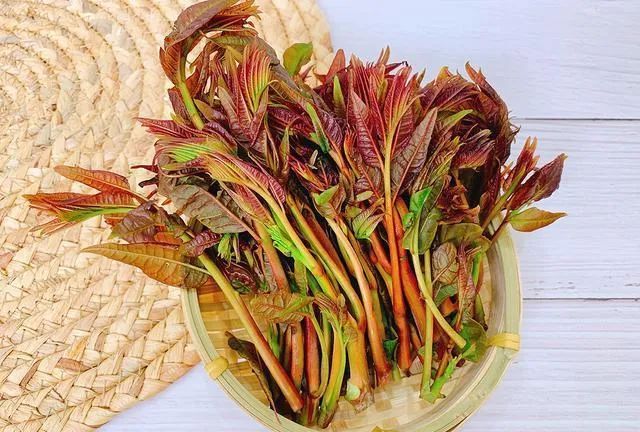
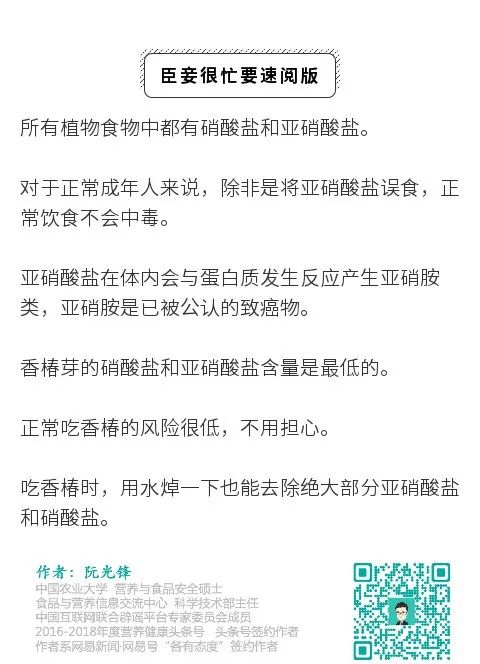
The weather is getting warmer and warmer, and spring blossoms are everywhere around the community. Every season, everyone will eat a spring vegetable-Toona sinensis.
Toona sinensis is light green and has a unique flavor, which many people like to eat. Toona sinensis eggs are also a favorite food. But there has always been a saying on the Internet that eating Toona sinensis will cause cancer because it contains nitrate and nitrite. The article also attached a program of a well-known TV station, experts’ opinions, and detailed test data, which looked very real.
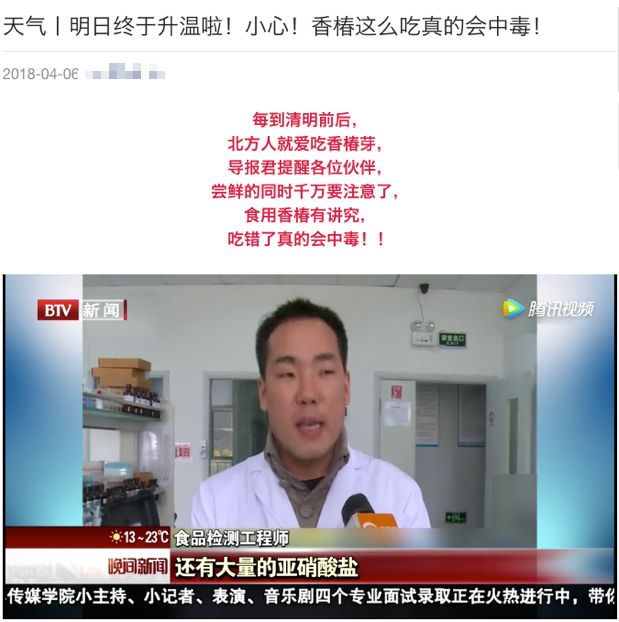
Many friends were very worried after seeing it, and left messages: Do you need to worry about nitrate and nitrite in Toona sinensis? Is it really carcinogenic? Can you still eat Toona sinensis? Today we will talk about Toona sinensis.
Why is there nitrite in Toona sinensis?
Indeed, Toona sinensis contains nitrate and nitrite. But this is so normal. In fact, not only Toona sinensis, but also all plants contain nitrate and nitrite.
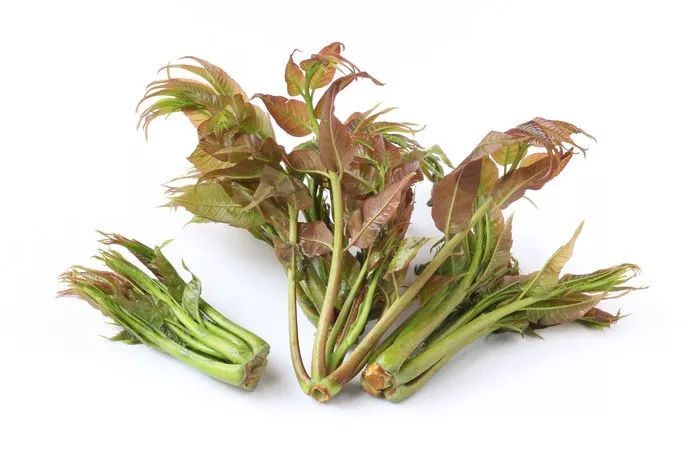
We know that plants need nitrogen fertilizer when they grow. Nitrogen is a widespread element in nature. Plants absorb nitrogen from the environment and finally synthesize amino acids through complex biochemical reactions. In this process, nitrate production is an inevitable step. There are also some reductases in plants, which will reduce some nitrate to nitrite. Therefore, all plants contain nitrate and nitrite.
In addition to the types of vegetables themselves, the contents of nitrate and nitrite are also related to factors such as planting methods and harvest time. The contents of nitrate and nitrite will be different between different vegetables, different producing areas and different seasons of the same vegetable.
How dangerous is nitrite?
Nitrite does have some toxicity. Toxicological analysis shows that nitrite has certain acute toxicity, and its semi-lethal dose is 57 mg/kg for decayed animals.
According to this amount, normal adults will not reach the toxic dose unless they eat nitrite directly as salt.
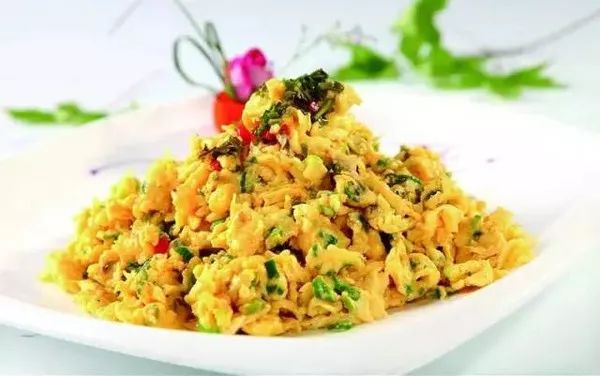
In fact, from the current poisoning cases, acute nitrite poisoning usually only occurs in infants with poor metabolic ability or people who eat a lot of nitrite by mistake.
In fact, the most worrying thing about nitrite is its chronic toxicity.
Because nitrite reacts with protein decomposition products under acidic conditions, nitrosamines are easily produced, and nitrosamines are recognized as carcinogens. Because the pH in human stomach is just suitable for the formation of nitrosamines, nitrite will increase the risk of cancer.
For more information about nitrite, please click: Eating leftovers often causes cancer? See if there is one in your refrigerator!
Can you eat Toona sinensis or not?
Whether we can eat Toona sinensis or not depends on the content of nitrite in Toona sinensis and our consumption.
Because of different varieties and growth periods, the contents of nitrate and nitrite in Toona sinensis will be different. However, on the whole, the content of nitrate and nitrite in Toona sinensis during germination is actually the lowest, and it gradually increases with the passage of time. And what we usually eat is just Toona sinensis buds.
Studies have investigated the contents of nitrate and nitrite in Toona sinensis buds in Jiangsu, Sichuan, Hunan, Hubei, Henan and Shaanxi. The results show that the nitrite content is about 4 mg/kg, and the nitrate content ranges from 500 mg/kg to 3000 mg/kg.
In 2002, JECFA (Joint Expert Committee on Food Additives) assessed that the safe value line ADI of nitrite, that is, the daily allowable intake (the dose that people or animals ingest a chemical every day without any known adverse effects on health) should be set at 0.07 mg/kg (calculated by nitrite ion); The ADI of nitrate is 0-3.7 mg/kg (calculated by nitrate ion).
According to this conversion, if a person weighs 60 kilograms and needs to eat about 1000 grams of Toona sinensis buds every day, it is possible to reach this upper limit.
Many people may think that this amount is not much. But everyone should pay attention, we usually only eat Toona sinensis occasionally, and no one will eat much. Besides, we eat in spring all the year round, and we hardly eat at other times (it’s hard to eat if we want to).
In addition, nitrate needs to be converted into nitrite under certain conditions, and Toona sinensis is rich in vitamin C, which has a certain blocking effect on the formation of nitrite, and nitrate is not so easy to convert into nitrite.
Generally speaking, you don’t have to worry too much about cancer if you eat Toona sinensis occasionally.
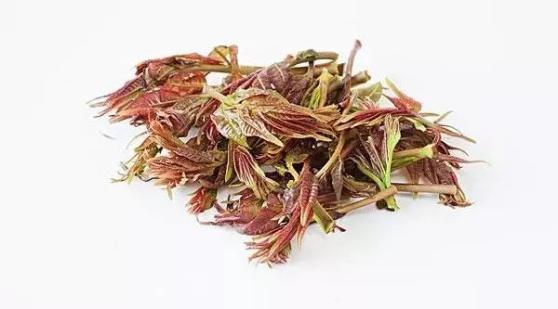
How to eat Toona sinensis is safer?
If you still have concerns about Toona sinensis buds, how should you eat them to reduce nitrite and nitrate?
1. When selecting Toona sinensis, try to choose tender buds and eat them when they are freshest. Such Toona sinensis buds contain less nitrate and nitrite.
2. If you are still worried about nitrite and nitrate, it is suggested that you blanch Toona sinensis with boiling water as much as possible, because this can reduce nitrite and nitrate by more than two thirds.
■ Over ■
The pictures in this article are all from the Internet, and they are only for typesetting beauty.
Some pictures have nothing to do with the content of the article. Please let us know if there is any infringement.